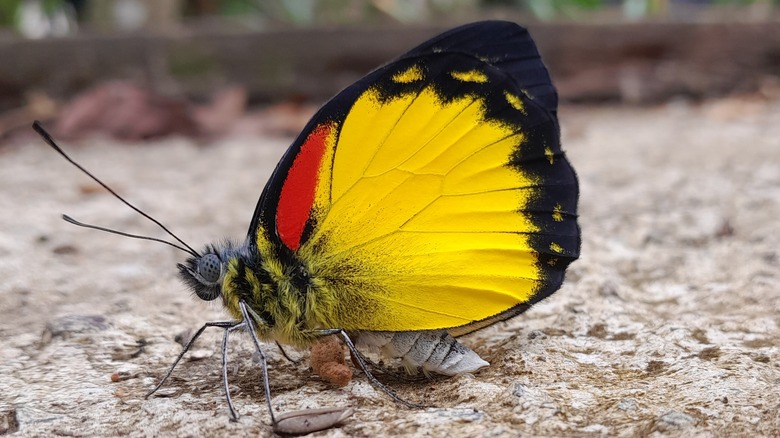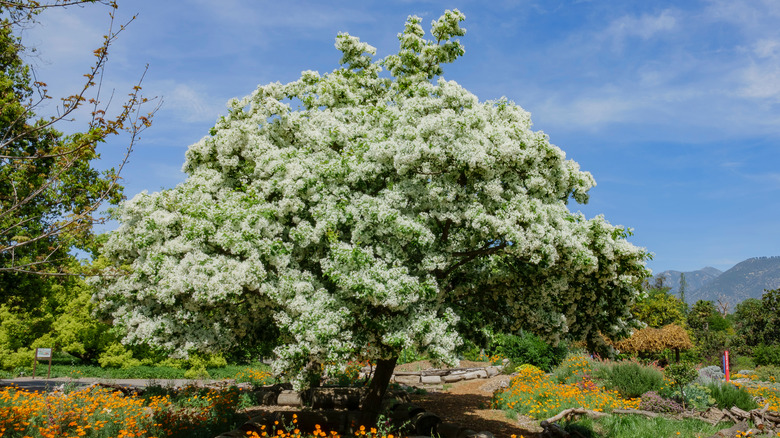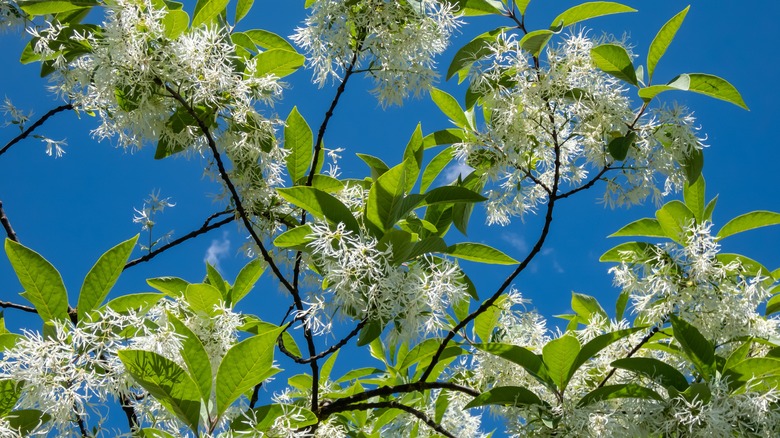Attract Birds & Butterflies With This Flowering Fall Stunner
If you love to see birds and butterflies in your yard but don't want to consistently fill a bird feeder, consider investing in flowers and trees that work well to support these pollinators. One such tree is the white fringetree (Chionanthus virginicus L.) A native to the lowlands of the southeastern and northeastern portion of the country, this flowering tree can be an excellent attractant for birds and butterflies.
This tree, which can reach up to 20 feet in height (or larger!), is specifically beautiful because of its white, fine flowers and long panicles. In the fall months, they become quite brightly colored with yellow and bright green. This is also when their white petals (which look like fringe) begin to display. You'll also notice that these trees have a slightly sweet fragrance to them (you'll likely pick it up when the wind blows). It's that scent, along with the fruits that mature in the later portion of the summer months, that bring in birds and butterflies.
As birds begin to bulk up for the winter months, these trees can be a great place for them to find food and shelter. Though it requires a bit of extra care, white fringetree is an excellent choice for those in hardiness zones 3 to 9. Planting trees in the fall can be a great way to prepare your yard for spring blooms, too.
Why the white fringetree is a great option to draw birds and butterflies in
The white fringetree can be a showstopper in your yard, working well as a single tree or as a large, shrub-like environment to support birds and butterflies. It can also blend in well within a more forested space as long as it can get enough light of its own. The tree blooms from the end of May into June; and, during that time, the fragrant flowers will draw in butterflies looking for nectar along with bees, which could help stimulate blooms on other plants in your yard.
Note that these trees are dioecious. That means that, in order to stimulate the growth of fruit, you'll need at least one male and one female of the plant present. The female produces berries by mid-August. These darker blue berries can draw in a range of local birds, including bluejays, mockingbirds, robins, and cardinals (along with many others). The fruit is about ½ inch or larger and tends to be egg-shaped, developing in clumps.
Throughout the season, the white fringetree also features longer leaves that can reach 8 inches. They are a darker green color, which begins to be prominent by the middle of May. That provides valuable shelter for a range of species. While it maintains its foliage into the later portion of the fall, yellowing as the cool weather occurs, the tree also helps support bird habitats through its scaly bark and twig loss. That also adds a bit of interest to any garden.
How to provide the right environment for white fringetree to thrive
To ensure the best attraction for birds and butterflies, there are a few things to keep in mind to support the growth and development of this tree. The right conditions help to ensure proper blooms and berry growth. You can grow white fringetree in full sun to partial shade, and it's a slower grower. That means it will take some time to reach its mature height of 12 to 20 feet. The tree needs well-draining, moist soil. It's rather adaptable to most soil types, though it does best in acidic soil conditions. The worst you can do for this tree is to allow it to dry out, especially during the initial year when it's working to establish its roots. Consider the application of a balanced fertilizer at the start of spring the first year or two after planting it to help encourage proper growth.
The white fringetree is durable and less susceptible to most diseases and insects, though some problems with emerald ash borer have been noted. It can also become a host for various moths, especially in the southern climates. Typically, they are resistant to most conditions that could affect other trees that birds and butterflies in your area may be dependent on.
They also bush out well, which allows them to support larger populations of wildlife over time. You don't need to prune them back, but you can train them to grow in the direction you desire. If you plan to prune these trees to maintain their shape, do so in the later summer months.


